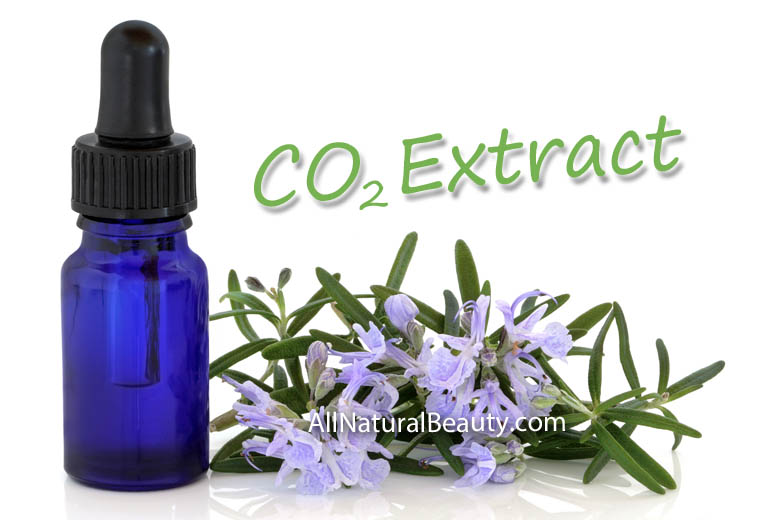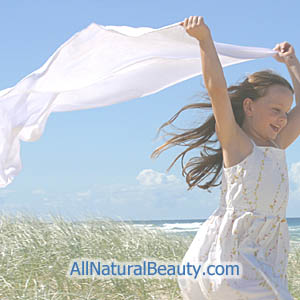
Synopsis:
Vanilla in all its forms is an essential ingredient in skin care, perfumery, culinary, and emotional needs. The following is Jeanne Rose’s profile of this essential plant.
Vanilla. Common Name/Latin Binomial: Vanilla planifolia
Other Common Name/Naming Information: The word vanilla from the Latin ‘vagina’ (sheath) or scissors case and refers to the shape of the pods and ‘planifolia’ means flat leaves.
Vanilla. Family: Orchidaceae. Vanilla is the only species of Orchid that is extracted, distilled or used in aromatherapy or foodstuff.
Vanilla. Countries of Origins: Vanilla is indigenous to Mexico and tropical America. It is now grown in many places including Madagascar and the island of Réunion
Harvest Location: Our Vanilla originates in Madagascar. In 2015, there was a difficult harvest of Vanilla.
Endangered or Not: Vanilla planifolia, the source of Vanilla essence, grows in the Andaman and Nicobar Islands, India in the Bay of Bengal and classified as a vulnerable species while Vanilla andamanica, a wild relative of commercial Vanilla is considered endangered.
Vanilla. General description of Plant habitat and growth: Perennial, herbaceous vine trained to grow in rows and reaches up to 75 feet.
Vanilla-Vanilla-EB via Jeanne Rose

Vanilla. Portion of plant used in distillation, how distilled, extraction methods and yields: Solvent extracted absolute. “The green fruit which looks like a green bean is picked after it spends some time on the vine and is then cured. This is another one of the plants that has no odor; the odor develops upon drying and curing (See also Orris and Patchouli). These immature pods are then picked, put on trays, and left to ferment. When they turn brown, they become extremely fragrant, this fermentation process allows the Vanilla to develop, and the best quality beans accumulate white Vanilla crystals on the bean” 375 Essential Oils and Hydrosols, p.154.
Vanilla absolute has the best and strongest scent and this dark brown viscous product makes an excellent addition to many perfumes. It is alcohol soluble but portions of the absolute will settle out of the perfume and the perfume will need to be filtered.
Vanilla CO2 This is a creamy substance extracted with carbon dioxide with a lovely Vanilla odor is pale yellow to tan, has a shelf life of about 3 years. This can be used as a flavoring agent as well as in solid perfumes.
Vanilla oleoresin is also available. Arctander describes the scent as rich, sweet, Vanilla without the Tobacco note of the absolute. This is usually used in oil-based scents and not alcohol based scents or products.
Vanilla water-soluble. I was able to get a sample of this some years ago from a supplier in Madagascar. It was very interesting but I prefer to use the others
Organoleptic Characteristics of absolute:
Color dark brown with crystals
Clarity opaque
Viscosity Viscous, the EO/abs begins solidifying at room temperature
Intensity of odor 4 on a scale of 1-10
Odor Description/ Aroma Assessment – The scent is woody floral fruity and spicy. Sometimes the floral note is at the forefront but in my experience, a soft wood scent presents first and then the floral, fruity and spicy.
General Properties Vanilla products are a powerful calmative and relaxant and can be used as an aphrodisiac.
Properties and Uses: Vanilla is used by inhalation and application. Inhaled it is calming, relaxing and soothing to the mind. It is used in many body care products and as a sexual lubricant. Applied in a massage blend it can be an aphrodisiac.
I personally use this substance as an odor for inhaling, relaxation, sweet thoughts of where I have seen it and as a necessary part of most of my perfume bass notes as well as in cooking.
Application/ Skincare. Vanilla CO2 is preferred for skin care and here it is somewhat anti-inflammatory and will help to soothe and calm skin that is irritated.
Alter this recipe as you need to suit yourself, you can use a different carrier oil each time you make it.
Maple Sugar/Vanilla Body and Foot Scrub
½-cup Maple sugar (can use granulated sugar for a grainier scrub or Turbinado sugar for a nice change)
½-cup fine sea salt
¼-cup or less or more of a combination of favorite carrier oils
1-tablespoon kaolin or china clay (white)
1-tablespoon honey
10 drops each of Vanilla abs or CO2, Lemon and Orange essential oils.
Mix all ingredients in small bowl. Spoon into jar. This recipe makes 2-cups + ounces. The oil will rise to the top, just stir before use. This is an invigorating scrub so rub gently. Bath gloves work best for good exfoliation. Works very well on legs, feet, knees, and elbows. Not recommended for the face.
Diffuse/Diffusion: Filtered Vanilla tincture can be used in blends in the diffuser.
I like to make my own Vanilla tincture for use as the fixative in a perfume, a flavoring agent for foods, or in blends that will be alcohol soluble. This is what I do: Take a small container and fill it with chopped Vanilla beans that have been sliced open, the grains scraped out and added and beans chopped. (It is the grains that will have the most odor). Add 95% neutral grape spirits to fill the container. Let this age for a period of time (at least a month) and use the tincture in foods or in alcohol based perfumes. Portions of the Vanilla cannot be extracted with this high-proof alcohol and when added to a perfume blend it will settle out as a dark brown sludge or particles and the tincture of perfume will need to be filtered. As you remove the tincture for use, you can refill the container with more alcohol several more times. The first fraction will be the best however. For best flavor results it is best to use 70-75% grape alcohol.—jeannerose-2000
Emotional/Energetic Use: Vanilla is used to soothe and calm the psyche, and to help with frigidity and sterility.
Key Use: Perfumery and flavoring food.
Chemical Components: Vanillin, ethyl vanillin and coumarin.
Physiochemical Properties:
Solubility partially soluble in alcohol and carrier oils
Specific Gravity 0.90200 – 1.00200 @ 20 C and 1.15000 to 1.29000 @ 25.00 °C. Depends on the manufacturer
Optical Rotation -24 – -27 @ 20°C
Refractive Index at 20° 1.42200 – 1.42300 @ 20 C
Comparison of Main Components: Vanilla can be detected in very small quantities – at concentrations of 0.1 parts per million when it is dissolved in water. To show how small changes in chemical structure can influence taste, ethyl vanillin, which has one more carbon and two more hydrogen atoms than vanillin, is 3-4 times stronger in its vanilla aroma.
Blends Best with: Vanilla adds an exotic note to just about any formula and is mostly used with floral, fruity, woody and spicy scents. It is stunning with Amber, Labdanum and floral scent such as Ylang Ylang. Blends well with all citrus such as Bergamot, Grapefruit, Lemon, Mandarin, Orange, Tangerine, and woods like Atlas Cedar and Sandalwood and spicy notes such as Frankincense.
Blending with formula.
A Favorite Perfume Formula
8-flowers Perfume – Huit Fleurs
– Jasmin abs OR CO2
– Lavender SD & abs
– Linden abs
– Mimosa abs
– Neroli SD
– Rose abs
– Tuberose abs
– Vanilla CO2
– Ylang-Ylang SD
These can be mixed in any quantity and/or in equal quantities to make a stunning perfume.
Don’t forget to let it age for several weeks before adding an equal quantity of 95% neutral grape spirits. Then let it age again for several weeks. Smell it, sample it. You may want to dilute by half again and age again. The resultant perfume will be 25% pure natural perfume ingredients.
HYDROSOL: I think it would be a waste of water to try to distill Vanilla beans. To date there is no hydrosol.
PLEASE NOTE: A true hydrosol should be specifically distilled for the hydrosol, not as a co-product or even a by-product of essential oil distillation. The plant’s cellular water has many components most are lost under pressurized short steam runs for essential oil, or by using dried material. We recommend that the producers specifically distill for a product by using plant material that is fresh.
Vanilla. Historical Uses: As flavoring and as an aphrodisiac. Vanilla was used by the Aztecs and indigenous people of Central America to flavor Cocoa; Vanilla was combined with Chilé Pepper and Chocolate to make a tasty drink only fit for the god/kings. It was cultivated for ornamental use.
Interesting Information: The Vanilla plant is so interesting that entire books have been written about it. In 2004 I spent many happy hours reading “Vanilla: The Cultural History of the World’s Favorite Flavor and Fragrance” by Patricia Rain. It is the only plant of the Orchid family used in Aromatherapy. The plant hasn’t any odor; the odor develops upon drying and curing. Vanilloside breaks down to Vanillin and glucose upon ripening and when cured is the source of Vanilla extract. In Madagascar the anther and stigma have to be pressed together by hand as pollinating bees are absent. Here Vanilla is the only hand-pollinated crop (this was pioneered in 1841 by a 12-year-old slave from Réunion); all West Indies Ocean stock is allegedly from a single cutting in Jardin des Plantes in Paris.
Abstract/Scientific Data: Vanilla–its science of cultivation, curing, chemistry, and nutraceutical properties. By Anuradha K1, Shyamala BN, Naidu MM.
Abstract. Vanilla is a tropical orchid belonging to the family Orchidaceae and it is mainly used in food, perfumery, and pharmaceutical preparations. The quality of the bean depends on the volatile constituent’s, viz., the vanillin content, the species of the vine used, and the processing conditions adopted. Hence, proper pollination during flowering and curing by exercising utmost care are the important aspects of vanilla cultivation. There are different methods of curing, and each one is unique and named after the places of its origin like Mexican process and Bourbon process. Recently, Central Food Technological Research Institute, Mysore has developed know-how of improved curing process, where the green vanilla beans are cured immediately after harvest and this process takes only 32 days, which otherwise requires minimum of 150-180 days as reported in traditional curing methods. Vanillin is the most essential component of the 200 and odd such compounds present in vanilla beans. Vanillin as such has not shown any antioxidant properties, it along with other compounds has got nutraceutical properties and therefore its wide usage. The medicinal future of vanilla may definitely lie in further research on basic science and clinical studies on the constituents and their mechanism of action.— PMID:24090143 [PubMed – indexed for MEDLINE]
Please note that most Vanilla flavoring today is not from the Vanilla plant but from wood pulp as a byproduct of paper-making and from coal-tar.
Safety Precautions and Contradictions: Prolonged exposure can be deleterious to the nervous system
Key Use: Flavoring and in Perfumery.
Patch Test: If applying a new essential oil to your skin always perform a patch test to the inner arm (after you have diluted the EO in an vegetable carrier oil). —Wash an area of your forearm about the size of a quarter and dry carefully. Apply a diluted drop (1 drop EO + 1 drop carrier) to the area. Then apply a loose Band-Aid and wait 24 hours. If there is no reaction, then go ahead and use the oil in your formulas. —The Aromatherapy Book, Applications & Inhalations, p. 64
References:
Arctander, Steffen. Perfume and Flavor Materials of Natural Origin. Steffen Arctander. 1960
Mabberley, D. J. Mabberley’s Plant-Book, 3rd edition, 2014 printing, Cambridge University Press.
Rose, Jeanne. 375 Essential Oils and Hydrosols. Berkeley, California: Frog, Ltd., 1999
Rose, Jeanne. The Aromatherapy Book: Applications & Inhalations. San Francisco, California:
Herbal Studies Course/ Jeanne Rose & Berkeley, California: North Atlantic Books, 1992
DISCLAIMER: This work is intended for informational purposes only and is not a substitute for accurate diagnosis and treatment by a qualified health care professional. Dosages are often not given, as that is a matter between you and your health care provider. The author is neither a chemist nor a medical doctor. The content herein is the product of research and personal and practical experience. Institute of Aromatic & Herbal Studies – Jeanne Rose©
- Education
- Books
- Courses
Ms. Rose is the author of over 20 books, including Herbs & Things, The Herbal Body Book, The Aromatherapy Book, and Jeanne Rose’s Herbal Guide to Food, and she has taught herbs, aromatherapy and distillation extensively throughout the U.S. She organized and was President of the first large Aromatherapy organization in the United States, NAHA, and speaks widely at many other events and conferences. She teaches distillation techniques for quality essential oils throughout various parts of the world. The word, ‘hydrosol’ as used for the waters of distillation, was first used and put in place by Jeanne Rose in 1990.

Aromatherapy Classes,
Certification Weekends and Seminars
taught in person by Jeanne Rose
ENROLL NOW – Visit http://jeannerose.net/calendar.html
or call 415-564-6337 or email aromaticplant@yahoo.com
Enrollment limited.
Seminars are valid for 15 CE and towards Practitioner Certification

Jeanne Rose is the author of 22 books on herbs and aromatherapy. Most recently, Jeanne authored “375 Essential Oils & Hydrosols” which is a complete reference book of 375 aromatic plant extracts and hydrosols with phytochemical, clinical and botanical indices.
She has released several booklets since 2006.

Jeanne Rose is the Director of the Institute of Aromatic Studies, principal tutor of both the Herbal Studies Course© and the Aromatherapy Studies Course – Practitioner© by Distance-study and Aromatherapy Course by home-study.
Learn more about the 3 types of home studies courses:
The Aromatherapy Course
– Home and Family©
AROMATHERAPY STUDIES COURSE©
– Practitioner
HERBAL STUDIES COURSE©
Ms. Rose is the author of over 20 books, including Herbs & Things, The Herbal Body Book, The Aromatherapy Book, and Jeanne Rose’s Herbal Guide to Food, and she has taught herbs, aromatherapy and distillation extensively throughout the U.S. She organized and was President of the first large Aromatherapy organization in the United States, NAHA, and speaks widely at many other events and conferences. She teaches distillation techniques for quality essential oils throughout various parts of the world. The word, ‘hydrosol’ as used for the waters of distillation, was first used and put in place by Jeanne Rose in 1990.


















